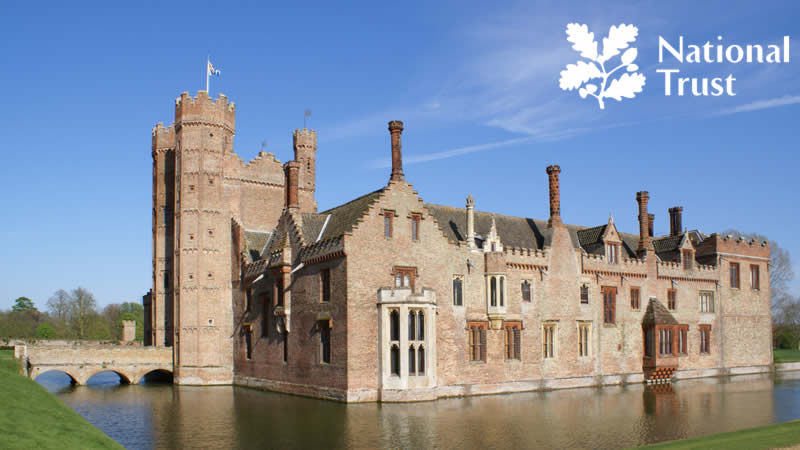Norwich Cathedral
Norwich Cathedral was designed by Herbert de Losinga and the construction started in 1096 after two churches were destroyed to make place for the cathedral. Today, Norwich Cathedral is the country’s second tallest spire and has the second largest cloisters, with only Salisbury cathedral taller.
The colourful stained-glass windows show scenes from the Old and New Testaments and the stone vaulting of the nave roof was sculptured during the roof’s construction during the middle ages. Limestone makes up a lot of the Cathedral which was transported across the channel quarries in Normandy, France. This was then floated from Great Yarmouth on barges down the River Wensum to Norwich. The whole Cathedral was built in 50 years, with the construction being fully complete in 1145.
The cathedral was originally built as a church for Benedictine Monks who worshipped there 8 times every day, starting at 2am and finishing at midnight. When Henry VIII closed down all monastic communities during reformation, Norwich Cathedral was re-founded and run by a dean with a governing body of priests. The cathedral holds services every day and events across all seasons, receiving around 400,000 visitors every year.
Norwich Cathedral Refectory Café is run by the famous Norfolk department store Jarrold, and offers a fine selection of food, including soups, sandwiches, coffee and cake and Jarrold’s famous scones. Ingredients are sourced from local suppliers where possible and fresh bread is delivered daily to the Cathedral Café. The gift shop sells a range of items relating to the history of Norwich Cathedral, as well as gifts produced by people living in Norfolk.
Daily tours are offered at Norwich Cathedral for visitors to gain an insight into the 900 years of history. Whilst on a tour, explorer backpacks are available for children aged 5-11 which contain items to help them understand the history and architect of the cathedral. For example, it includes a set of binoculars and a magnifying glass to allow the children to observe the impressive building.
In 2002 a labyrinth was laid in the grass at the centre of the cloisters to honour the Golden Jubilee of the Queen.
Edith Cavell left Norfolk in 1895 to train as a nurse and was responsible for starting the first professional school for nursing in Belgium in 1907. After WW1, Edith Cavell helped nurse many soldiers across both sides of the conflict and helped 200 soldiers from the German forces escape to neutral Holland before later being arrested and executed on 12th October 1915. Between Swardeston, where she was born and the cathedral, a walking and cycle route has been made which includes specific locations Edith would have known in her early life and her final resting place. To commemorate Edith Cavell, 14 paintings of the Passion of Edith Cavell are in the cathedral throughout the year.
Surrounding Norwich Cathedral is a 44-acre haven known as The Close, containing over 80 listed buildings. In the lower end there are many Georgian properties overlooking a vast green and it’s a lovely area to explore on foot. Take in Pulls Ferry and the riverside paths, a very picturesque part of Norwich. The upper end of The Close is a greenspace which spans along the west front of the cathedral.
The Cathedral Quarter is an area of independent shops, cafes and restaurants, galleries and also home to the Norwich University of the Arts. Throughout the year Norwich Cathedral regularly celebrates creativity and art and holds many exhibitions and events that are free to the public.
A pair of breeding peregrine falcons have made the cathedral spire their home in recent years, adding to the draw of this popular Norfolk attraction. In 2009, a male peregrine made a home in the 250-foot spire, with a female falcon joining him soon after. The Hawk and Owl Trust decided to set up a nesting platform along with two webcams, allowing visitors a close-up view of the nest during their visit. Every summer since 2012, the peregrine falcons have successfully reared a number of chicks.
For further details including opening times and upcoming events, please visit their website:
A timeline of Norwich
Read about some of Norwich’s most important dates in history, including when Norwich Castle, Norwich Cathedral and other historic and important buildings were built. When the Black Death reached Norwich, Kett’s Rebellion and when devasting fires hit the city. See important dates in history for Jarrold Department Store, Colman’s Mustard, The University of East Anglia, Norwich International Airport and Norwich City Football Club.
The finest holiday cottages & self-catering accommodation in Norfolk.
Book with Norfolk Hideaways
Find & Book
Jicklings Cottage
, Norfolk
Just a stone's throw away from the bustling quay at Wells-next-the-Sea and all its splendid amenities, Jicklings Cottage is a contemporary and artistic conversion of a 1636 character property. Beautifully curated with coastal inspired accents, this hideaway showcases original features with quirky modern styling focused on relaxation and comfort. ?

The Coach House
, Norfolk
Located in rural Flitcham, The Coach House is a romantic hideaway in the grounds of a 19th century vicarage with beautiful, uninterrupted views over rolling countryside, just a short drive from the heart of the Royal Sandringham Estate. Presented to a high standard, this hideaway is an ideal retreat away from the bustle of the coastal villages, while being within 20 minutes of many of the most popular destinations.

Primrose Farm Barn (14)
, Norfolk
Located in Roughton, only a few miles away from the beautiful north and east Norfolk coast, Primrose Farm Barn is an exquisitely finished luxury detached barn conversion boasting an indoor heated salt water swimming pool. Situated in one of the most picturesque and peaceful areas of Norfolk within its own extensive grounds, yet near to excellent amenities, this hideaway is the perfect base for a large group.
Useful links

Official website for information on Norwich Cathedral




